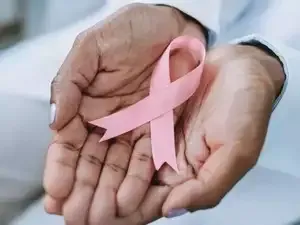By 2050, new cases of breast cancer and related deaths will have increased globally by 38 per cent and 68 per cent, respectively, disproportionately affecting countries with low human development index (HDI), a study has estimated. Breast cancer is the most commonly diagnosed cancer and the leading cause of cancer-related death in women. HDI measures a country's overall quality of life after looking at aspects, including life expectancy, education levels, and standard of living.
Researchers, including those from the International Agency for Research on Cancer -- WHO's cancer agency -- estimated current and projected burden, along with trends in breast cancer incidence and deaths over the past 10 years, in nearly 50 countries, using the GLOBOCAN database.
The findings, published in the journal Nature Medicine, showed that only seven countries meet the World Health Organization's goal of reducing mortality by 2.5 per cent a year, including Denmark, Switzerland and the Netherlands.
The goal is outlined under the Global Breast Cancer Initiative (GBCI), launched by the WHO in 2021, for countries to lower breast cancer mortality.
The authors found that there were 23 lakh new cases and 6.7 lakh deaths from breast cancer in 2022, globally.
However, this was unevenly distributed, they said -- in regions low on the human development scores, people diagnosed with breast cancer disproportionately had the highest mortality rates.
For example, one's lifetime risk of being diagnosed with breast cancer was found to be highest in France (one in nine) and Northern America (one in 10), whereas the lifetime risk of dying from breast cancer was highest in Fiji (one in 24) and Africa (one in 47).
"By 2050, new cases and deaths will have increased by 38 per cent and 68 per cent, respectively, disproportionately impacting low-HDI countries," the authors wrote.
This translated to an estimated 32 lakh new cases and 11 lakh deaths in the year 2050, they said.
The authors said a sustained investment and improvements in early diagnosis and treatment are needed to address growing inequities in breast cancer survival globally.
They also called for high-quality cancer data in countries with low and medium HDI to address inequities and monitor cancer control goals.
Trump-Modi Meet
The mega MIGA, MAGA plans of India's Modi and US' Trump
Trump says India has more tariffs than others
Trump's 'golden rule' for imposing reciprocal tariffs
The findings, published in the journal Nature Medicine, showed that only seven countries meet the World Health Organization's goal of reducing mortality by 2.5 per cent a year, including Denmark, Switzerland and the Netherlands.
The goal is outlined under the Global Breast Cancer Initiative (GBCI), launched by the WHO in 2021, for countries to lower breast cancer mortality.
The authors found that there were 23 lakh new cases and 6.7 lakh deaths from breast cancer in 2022, globally.
However, this was unevenly distributed, they said -- in regions low on the human development scores, people diagnosed with breast cancer disproportionately had the highest mortality rates.
For example, one's lifetime risk of being diagnosed with breast cancer was found to be highest in France (one in nine) and Northern America (one in 10), whereas the lifetime risk of dying from breast cancer was highest in Fiji (one in 24) and Africa (one in 47).
"By 2050, new cases and deaths will have increased by 38 per cent and 68 per cent, respectively, disproportionately impacting low-HDI countries," the authors wrote.
This translated to an estimated 32 lakh new cases and 11 lakh deaths in the year 2050, they said.
The authors said a sustained investment and improvements in early diagnosis and treatment are needed to address growing inequities in breast cancer survival globally.
They also called for high-quality cancer data in countries with low and medium HDI to address inequities and monitor cancer control goals.








